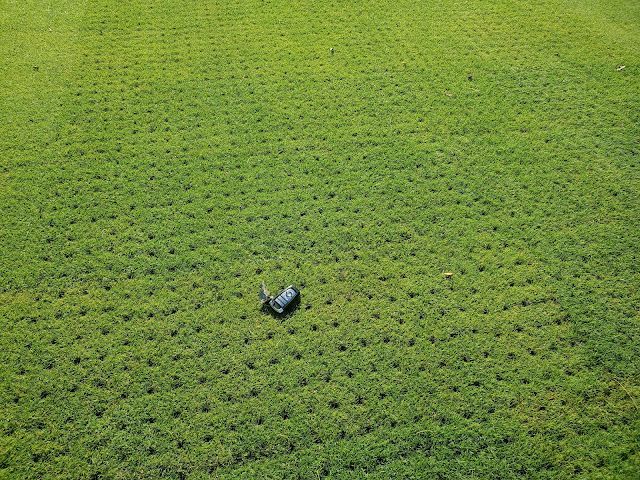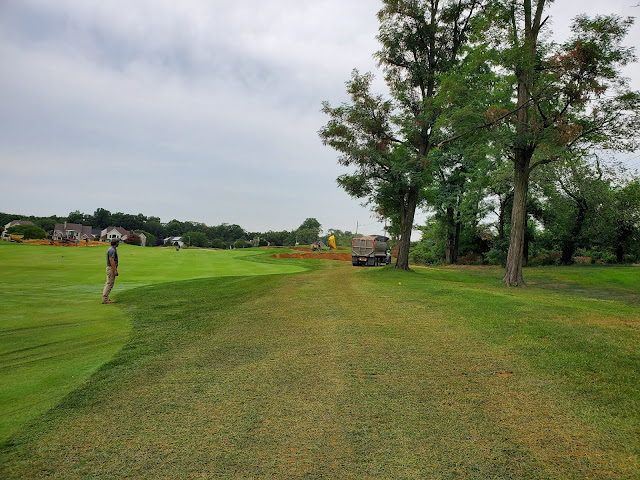As we've talked about in the past, the Annual Bluegrass Weevil is aptly named, due to the fact that it is primarily a pest of Poa annua. In the springtime, we consider this insect a good biological control in helping to prevent Poa encroachment in the tees and fairways. For the most part, the weevils take out the Poa, allowing the Bent to fill in.
But what's a weevil do when there's no more Poa? Well, while Poa may be like filet to these insects, and Bentgrass is ground beef, when their first choice is gone, they aren't going to pack their bags and leave. No, we are finding weevils--and their damage--in record numbers this year on Bentgrass.
What do we mean by record numbers? In sampling over the past couple of weeks, throughout most of the fairways, we have been finding fairly consistent counts of 100 weevils per square foot--that's over four million weevils per acre! As you can see below, the larvae are very small, but unfortunately there is power in numbers.
We have treated all of the fine turf areas of the golf course for the little guys, and have seen some positive results. When we start finding "Rice Krispies" coming to the surface, it means somebody isn't feeling well.
One of the tricky things when treating for weevils is that many control products need to be watered in. With all of the rain we have had lately, you might think we could just let Mother Nature do the watering in for us, but we need a fairly specific quantity of water, not a deluge. Therefore, even with soft conditions, we have had to run some sprinklers to get the plant protectants where they need to be.
A few cooler days (and nights) have been good for turf recovery, and will start to slow weevil activity. However, in planning for 2022, it will definitely be necessary to monitor Bentgrass more carefully and be prepared to play whack-a-weevil at a moment's notice.


















































